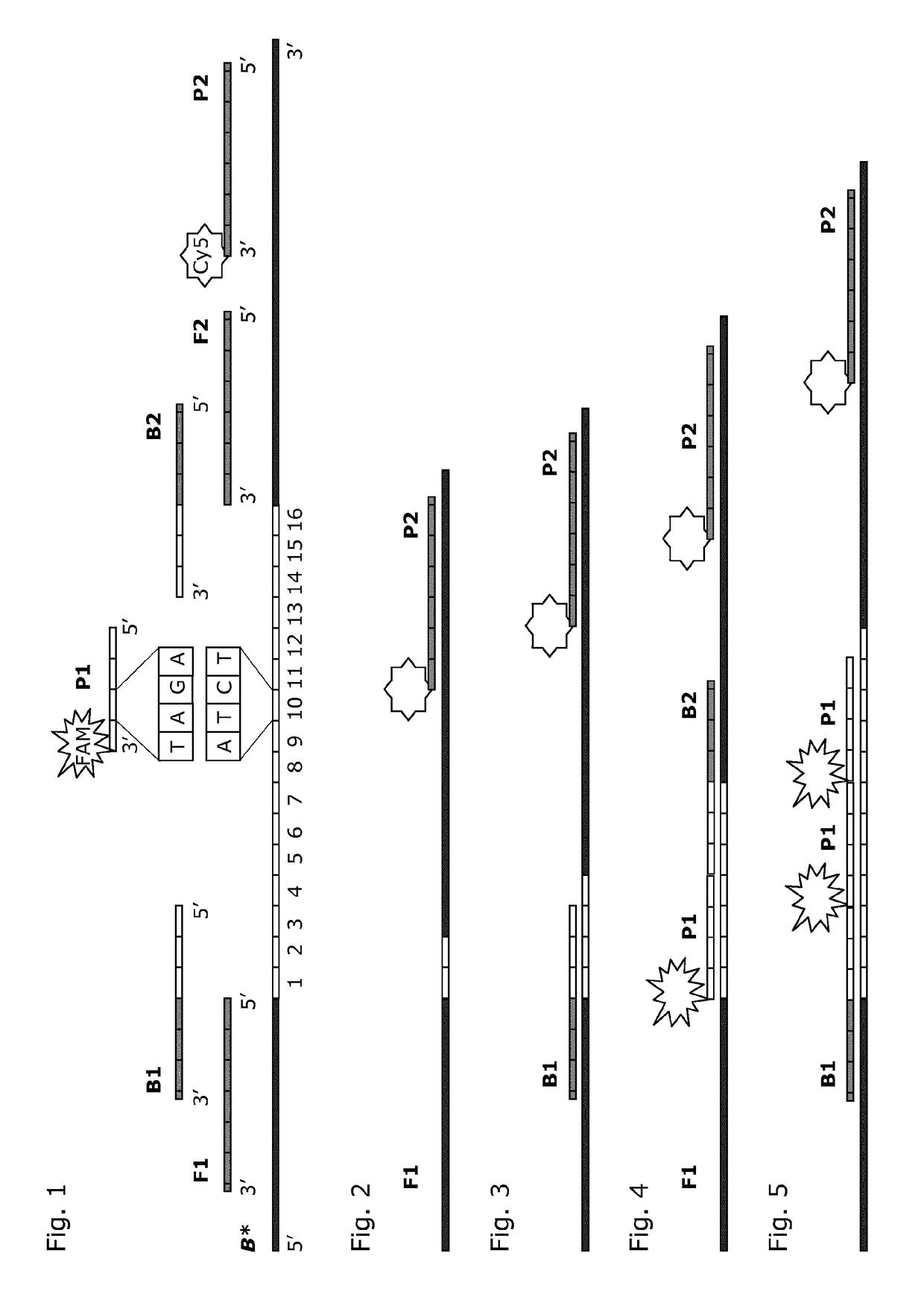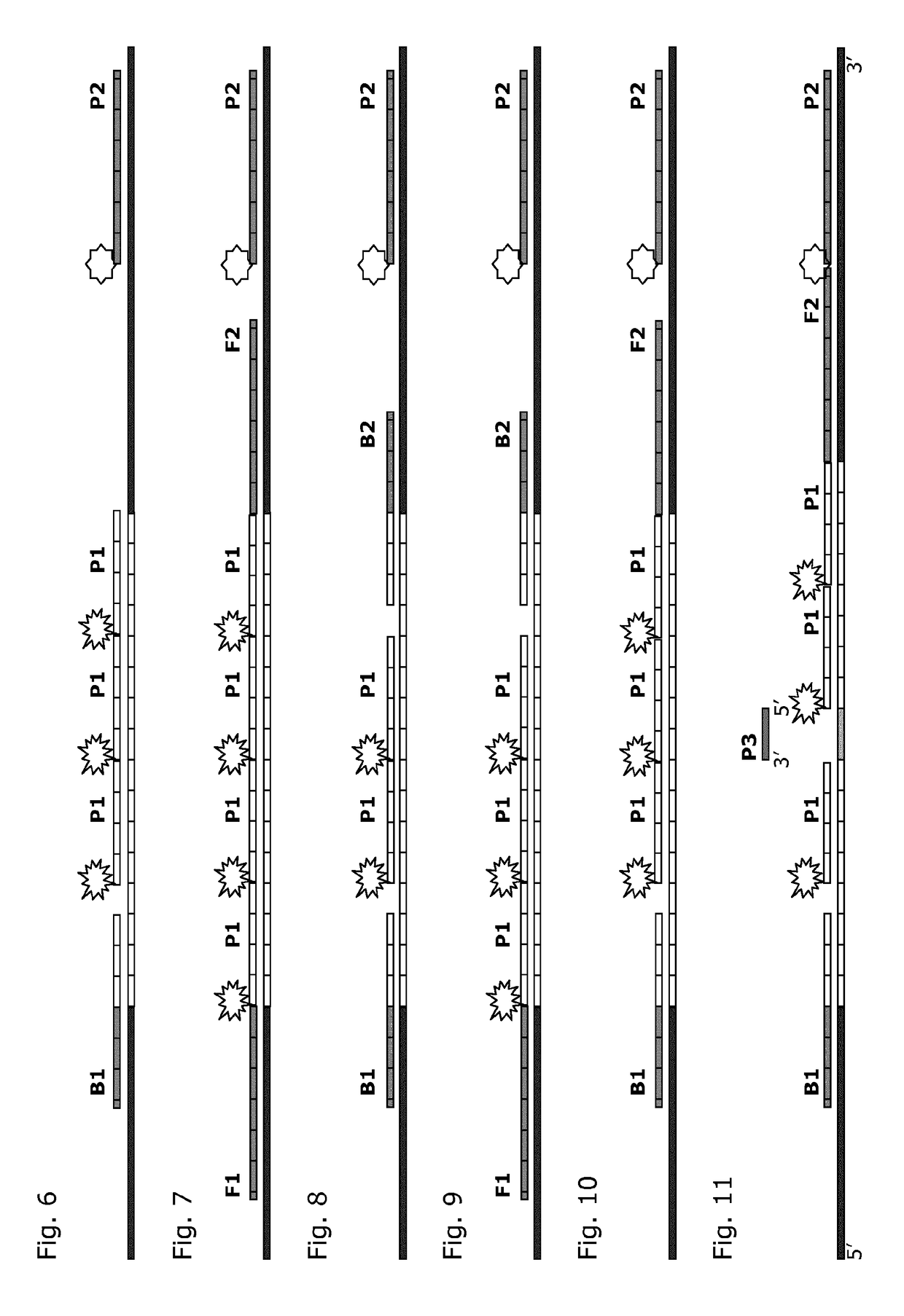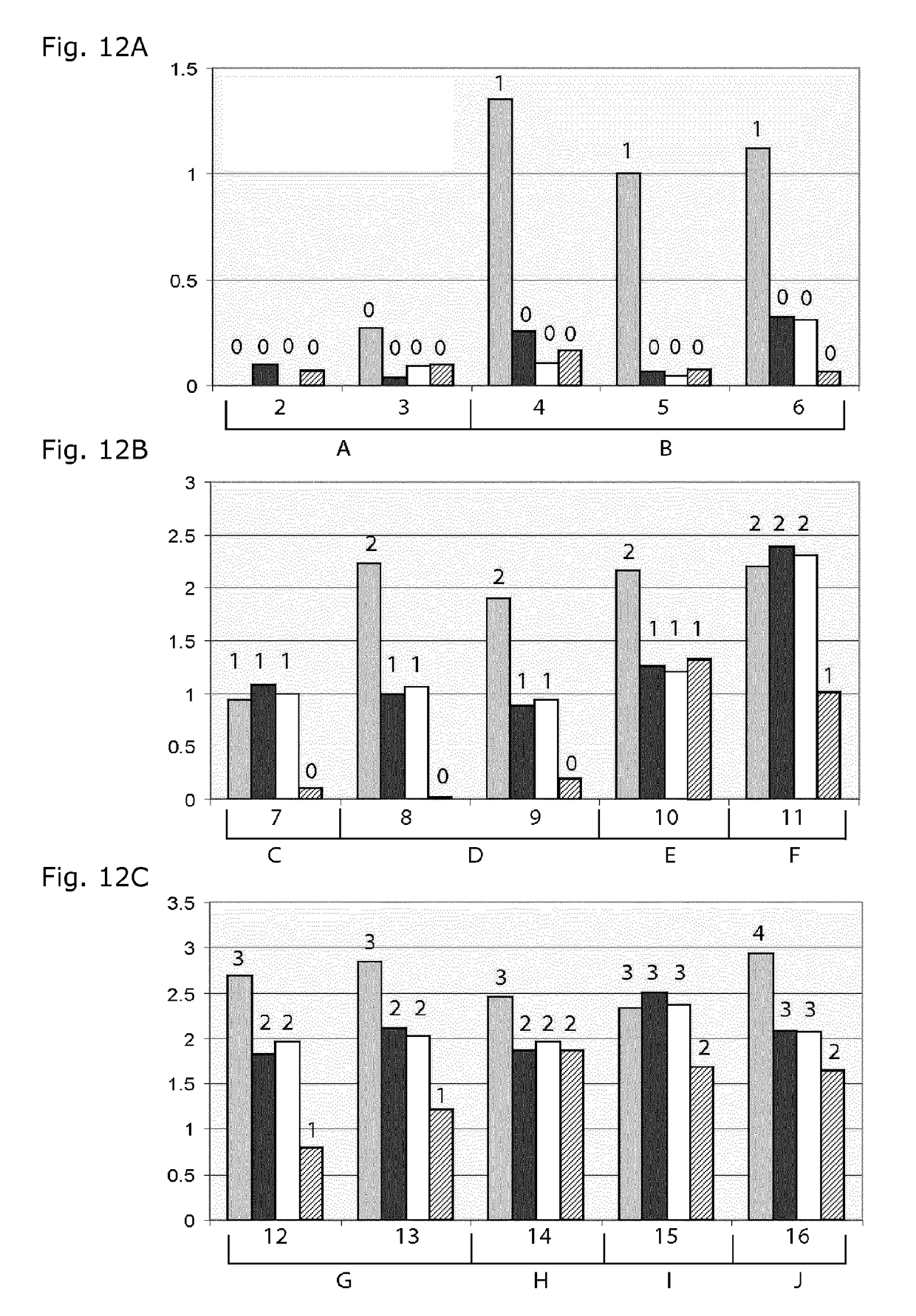STR genotyping by differential hybridization
a technology of differential hybridization and str, applied in the field of str genotyping by differential hybridization, can solve the problems of increasing the incurring cost and complexity of the application, and affecting the quality of the results
- Summary
- Abstract
- Description
- Claims
- Application Information
AI Technical Summary
Benefits of technology
Problems solved by technology
Method used
Image
Examples
Embodiment Construction
[0056]The present invention relates to the detection of the number of repeats in selected STR loci. According to the present invention, the number of repeat units is correlated to the signal intensity of parallel hybridization experiments. For this, the number of labeled, repeat-specific probes that bind to a repeat is correlated positively to the number of repeats present. Comparison of bound repeat probe signal to signal from a stoichiometrically binding reference probe outside the repeat region allows determination of the number of repeat probes bound per molecule and reduces the sensitivity of the method to the amount of DNA used. By making hybridization measurements in several parallel experiments, whereby a known number of the available repeats are blocked from hybridization in parallel experiments, it is possible to deduce the number of repeats present. Optionally, the signal response of the several experiments can be compared to results obtained empirically in model systems ...
PUM
 Login to View More
Login to View More Abstract
Description
Claims
Application Information
 Login to View More
Login to View More - R&D
- Intellectual Property
- Life Sciences
- Materials
- Tech Scout
- Unparalleled Data Quality
- Higher Quality Content
- 60% Fewer Hallucinations
Browse by: Latest US Patents, China's latest patents, Technical Efficacy Thesaurus, Application Domain, Technology Topic, Popular Technical Reports.
© 2025 PatSnap. All rights reserved.Legal|Privacy policy|Modern Slavery Act Transparency Statement|Sitemap|About US| Contact US: help@patsnap.com



